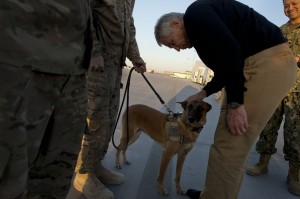Afghanistan, Pakistan Peace Talks With Taliban Continuously Marred by Posturing, Intervention
For both Afghanistan and Pakistan, the prospect of a future not marred by terrorist attacks is a strong incentive to explore peace talks with the Taliban groups that have fueled the bulk of the violence in both countries. Over the past few years, there have been many attempts to start such talks, but these efforts have not been successful so far. At times, one or more of the many sides involved in the talks has proposed an opening stance that was known to be untenable to another side. Also, parties not involved in particular sets of talks have taken active steps to derail them, such as when Karzai went ballistic over the sign on the door of the Taliban office in Doha (disrupting US-Taliban talks) and a US drone strike took out Hakimullah Mehsud just before he joined a set of talks in Pakistan (disrupting Pakistan-Taliban talks).
Today’s New York Times informs us that Hamid Karzai has been secretly working to establish talks with the Afghan Taliban since announcing in November that he would not sign the Bilateral Security Agreement even though his own loya jirga urged him to do so. This disclosure, mostly communicated to the Times through anonymous sources, but confirmed by Karzai spokesman Aimal Faizi, seems to account for a fair amount of Karzai’s behavior while refusing to sign the BSA and taking repeated steps that seem aimed at creating more friction between the US and the Karzai government.
Those providing the new narrative to the Times paint the talks between Karzai and the Taliban as not getting beyond initial contact and into discussion of substantive issues. The reasoning, according to these sources, is that by merely maneuvering Karzai into refusing to sign the BSA, the Taliban can achieve their primary goal of getting the US out of Afghanistan completely, so they would have no incentive to enter into an actual peace agreement with Karzai:
Western and Afghan officials, who spoke on the condition of anonymity because of the private nature of the peace contacts, said that the outreach was apparently initiated by the Taliban in November, a time of deepening mistrust between Mr. Karzai and his allies. Mr. Karzai seemed to jump at what he believed was a chance to achieve what the Americans were unwilling or unable to do, and reach a deal to end the conflict — a belief that few in his camp shared.
The peace contacts, though, have yielded no tangible agreement, nor even progressed as far as opening negotiations for one. And it is not clear whether the Taliban ever intended to seriously pursue negotiations, or were simply trying to derail the security agreement by distracting Mr. Karzai and leading him on, as many of the officials said they suspected.
So we now have a complete reversal of stances from early last summer. Recall that US diplomats had quietly worked for over a year to establish talks with the Taliban, with the Taliban going so far as to open an office in Doha. However, Karzai felt that the office presented too many of the trappings of a government in exile and he managed to scuttle those US-Taliban talks. I held out hope for the ascendance of a more moderate faction of the Afghan Taliban in the aftermath of that fiasco. Whether the secret approach to Karzai came from these more moderate elements is an interesting question worth considering, especially since only a few month elapsed between Karzai’s tantrum over the office in June and the secret communications starting in November. At any rate, we have gone from the US appearing to promote the talks and Karzai disrupting them to Karzai promoting talks and the US releasing information that seems aimed at scuttling them.
If the US truly cared about bringing peace to Afghanistan, an interesting new bargaining position would be to threaten both Karzai and the Taliban that they intend to stay in Afghanistan beyond the end of the year even if Karzai doesn’t sign the BSA, but that if a peace agreement is reached, the US would leave and provide a portion of the funding that the US now dangles as incentive for signing the BSA. Such a position by the US would allow the Taliban and Karzai to unite behind their one common goal–the removal of all US troops. With public opinion of the US effort in Afghanistan at an all-time low, promoting a full withdrawal would be a welcome development in the US.
Meanwhile, in Pakistan, the issue of peace talks with the Taliban is as muddy as it is in Afghanistan. Consider how the first screen of today’s Washington Post story on the talks loaded on my phone this morning: Read more →

